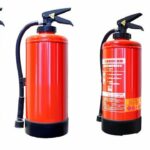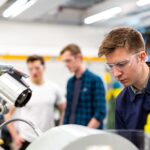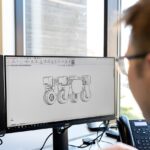Despite dramatic progress in the control of air quality over the past five decades, air pollution continues to be a problem in the U.S., according to the Environmental Protection Authority (EPA). Some of the top challenges facing the nation include meeting health-based standards for air pollutants, reducing our carbon footprint, reducing the risk posed by toxins in the air, and protecting the ozone layer. These are just a few new technologies that are working together to help the U.S. reach its goals.
Electrostatic Precipitators
Electrostatic precipitators or so-called ‘dry scrubber’ filters rely on static electricity to eliminate ash and soot from exhaust fumes before they leave the smokestacks. They are often used in power stations that rely on fossil fuels to generate electricity. In order for precipitators to work to their optimal capacity, safety inspections must be carried out assiduously, since problems such as broken instruments, corrosion, holes and grooves and other problems in dry and wet scrubbers and other equipment can negatively affect a company’s operations and result in the need for complete renewal of filtering systems instead of simple repair. An alternative to electrostatic precipitators are baghouse filters, which are made of fabric and which remove particulates produced by commercial processes.
Flue Gas Desulfurization (FGD)
This technique relies on various technologies to remove sulfur dioxide from flue gas emissions in coal-fired power plants. Modern systems are able to remove around 95% of this pollutant from the air. Two main methods are used: dry or wet scrubbing, in order to comply with the EPA’s Effluent Limitation Guidelines (ELG). In dry desulfurization, lime is used to react and eliminate gaseous toxins. Wet FGD relies on an alkaline-based solution (also made with lime) to remove gases. This solution is sprayed onto a scrubber, which then absorbs sulphur dioxide.
Selective Catalytic Reduction (SCR)
This system is often used in vehicles, to reduce the amount of pollutants emitted by diesel engines. It involves injecting a liquid reductant agent through a catalyst into the exhaust stream of the engine. The liquid starts a chemical reaction that converts nitrogen oxide into nitrogen, tiny amounts of carbon dioxide, and water. This is in turn released by the tailpipe.
Air pollution may still be a problem in the U.S. as it is in most industrial countries, but there are many technologies in place to reduce its effects. These include electrostatic precipitators, flue gas desulfurization, and selective catalytic reduction. These can be used alone or in conjunction with other technologies, depending on the type and scope of gases being used in specific commercial processes.









